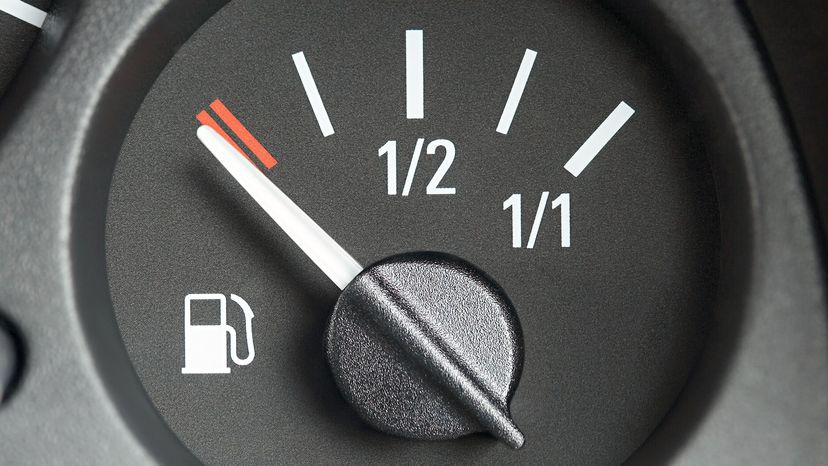The sending unit is located in the fuel tank of the car. It consists of a float, usually made of foam, connected to a thin, metal rod. The end of the rod is mounted to a variable resistor. A resistor is an electrical device that resists the flow of electricity. The more resistance there is, the less current will flow. In a fuel tank, the variable resistor consists of a strip of resistive material connected on one side to the ground. A wiper connected to the gauge slides along this strip of material, conducting the current from the gauge to the resistor. If the wiper is close to the grounded side of the strip, there is less resistive material in the path of the current, so the resistance is small. If the wiper is at the other end of the strip, there is more resistive material in the current's path, so the resistance is large.
When the float is near the top of the tank, the wiper on the variable resistor rests close to the grounded (negative) side, which means that the resistance is small and a relatively large amount of current passes through the sending unit back to the fuel gauge. As the level in the tank drops, the float sinks, the wiper moves, the resistance increases and the amount of current sent back to the gauge decreases.
This mechanism is one reason for the inaccuracy of fuel gauges. You may have noticed how your gauge tends to stay on full for quite a while after filling up. When your tank is full, the float is at its maximum raised position -- its upward movement is limited either by the rod it's connected to or by the top of the tank. This means that the float is submerged, and it won't start to sink until the fuel level drops to almost the bottom of the float. The needle on the gauge won't start to move until the float starts to sink.
Something similar can happen when the float nears the bottom of the tank. Often, the range of motion does not extend to the very bottom, so the float can reach the bottom of its travel while there is still fuel in the tank. This is why, on most cars, the needle goes below empty and eventually stops moving while there is still gas left in the tank.
Another possible cause of inaccuracy is the shape of the fuel tanks. Fuel tanks on cars today are made from plastic, molded to fit into very tight spaces on the cars. Often, the tank may be shaped to fit around pieces of the car body or frame. This means that when the float reaches the halfway point on the tank, there may be more or less than half of the fuel left in the tank, depending on its shape.
Now let's see how the gauge works.

